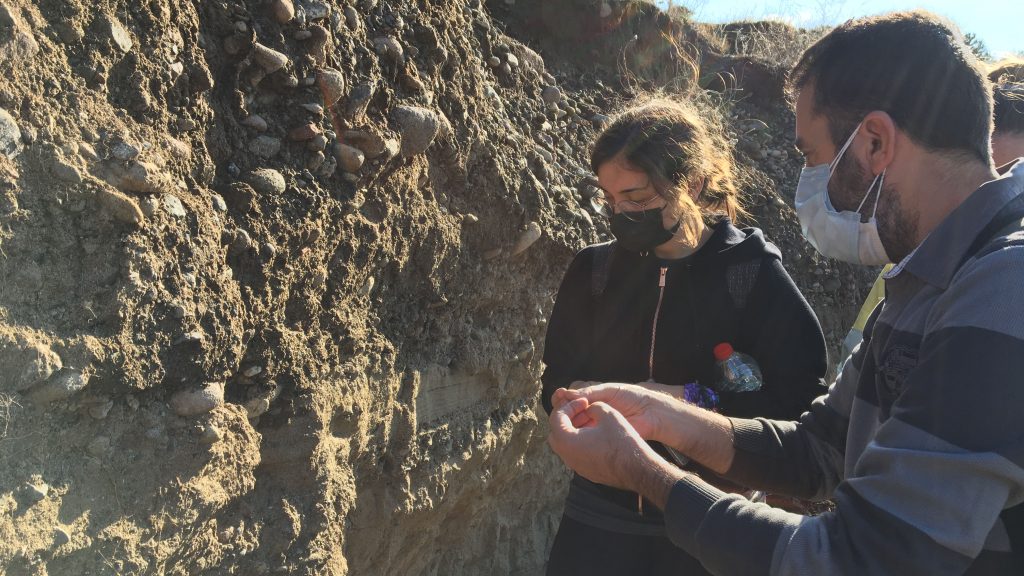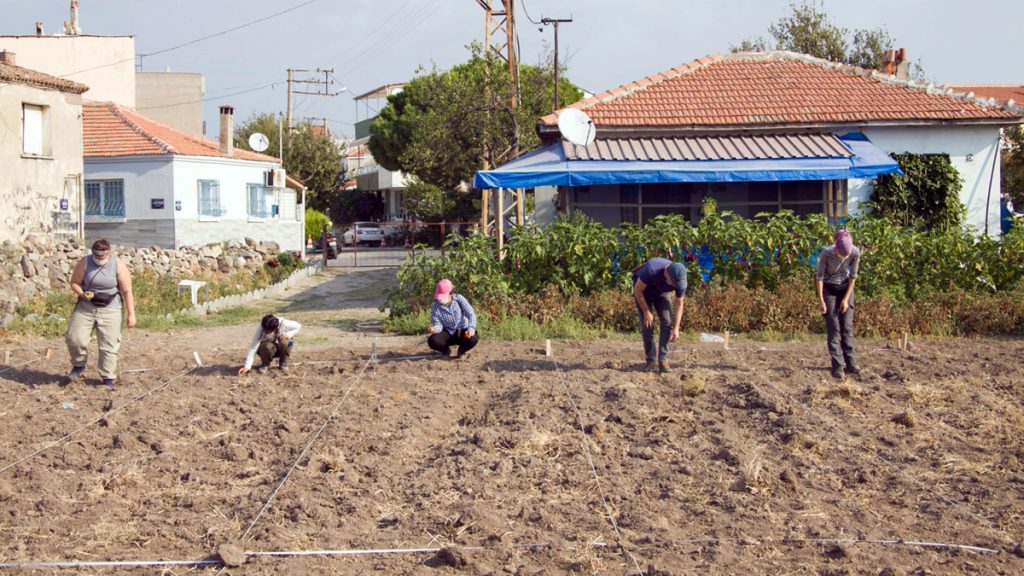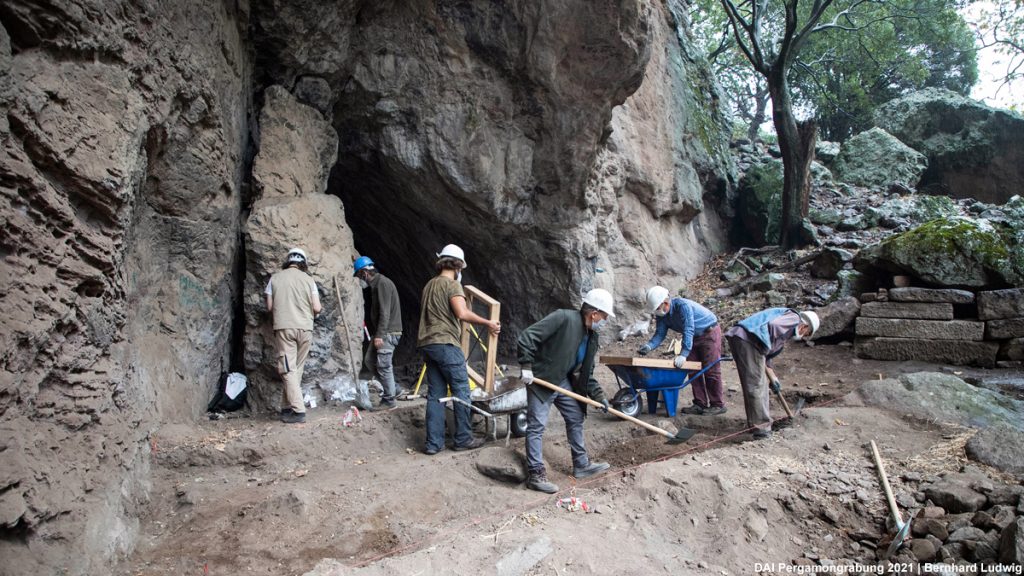Fabian Becker, Mehmet Doğan and Xun Yang
During the field campaign in 2019 an archaeological survey and a first geographical field inspection – including the description and sampling of some small sediment outcrops – took place in in the valley of the Tekkedere creek.
In 2020, the team from physical geography of Freie Universität Berlin and Ege Üniversitesi İzmir returned to the alluvial fan of the Tekkedere for percussion drilling.
The Tekkedere valley was more or less continuously settled since the Bronze Age; during the Ottoman period, settlements were abandoned and stepwise moved in lower positions until the village of Tekkedere found its current location close to the plain of the Bakırçay.
The drillings aimed at a diachronic reconstruction of the human-environment history in the small valley.
The exposed sediments clearly show the interaction between sediment dynamics in the Tekkedere valley (a thus most likely local human impact) and sediment delivery from the huge catchment of the Bakırçay river. Radiocarbon dating of the sediments are yet to come.
We are optimistic to have a convincing geoarchaeological reconstruction of the valley at hand after data from the lab are analysed and the chronological framework is set.
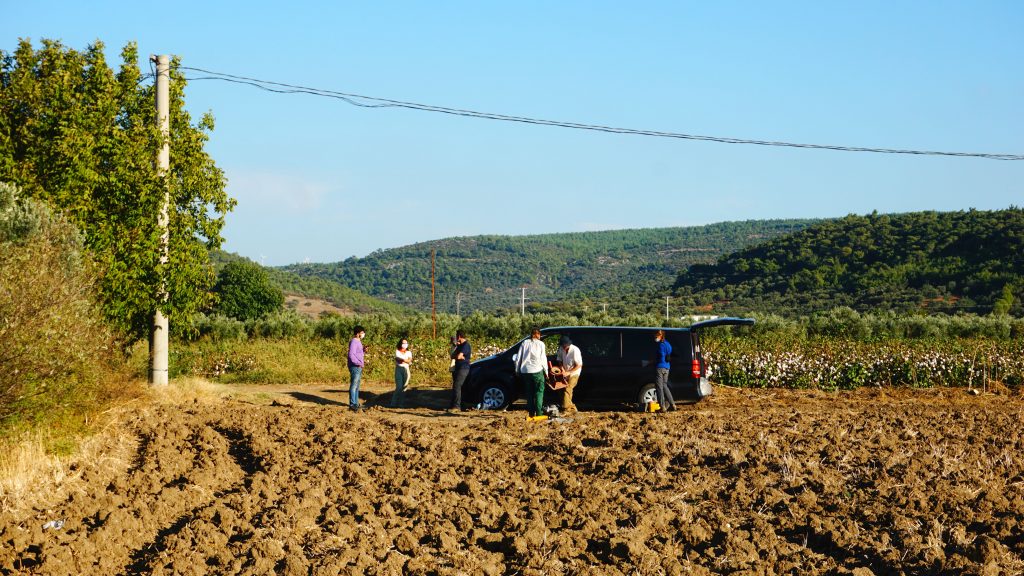
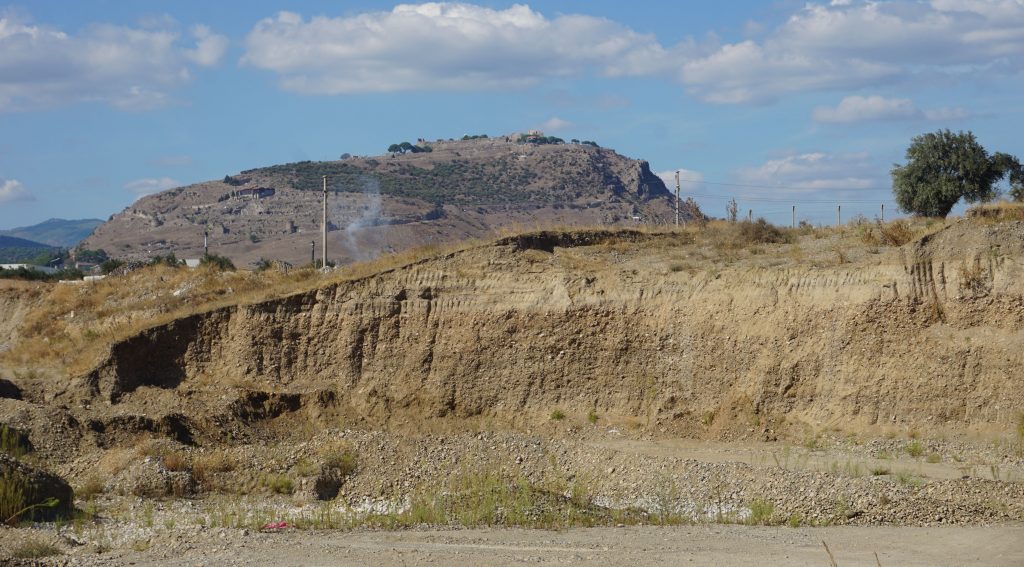
Located in a different setting, our group also got into some sediment profiles that are exposed at a gravel pit on the Bergama alluvial fan. Although the area is also for landfill, a valuable archive of the Holocene development of the alluvial fan right below the ancient acropolis of Pergamon can be found. We extensively described the sediment outcrops showing different architectural elements of a typical alluvial fan, but also uncovering abundant remains of Hellenistic to Late Imperial ceramics in fluvial layers. A Roman house filled in with the sediments of the fan is exposed at the gravel pit.
After radiocarbon dating and interpretation of lab results, also here, a nice story of human-environment interaction is waiting to be told.
Our group successfully rigged up a field lab in the excavation house in Bergama. With the assistance from students of Freie Universität and Ege Üniversitesi, we analysed most of the samples we collected in the field right at the spot.
Interesting results are thus just around the corner!
Team: Fabian Becker (Berlin), Mehmet Doğan (İzmir), Elif Gültekin (İzmir), Minel Korkmaz (İzmir), Moritz Nykamp (Berlin), Lena Schimmel (Berlin), Xun Yang (Berlin), Nami Yurtseven (İzmir)
